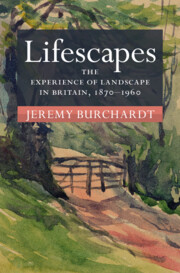Refine search
Actions for selected content:
31 results
7 - Diaries and Chronicles
-
-
- Book:
- The Cambridge History of the Holocaust
- Published online:
- 16 May 2025
- Print publication:
- 12 June 2025, pp 117-131
-
- Chapter
- Export citation
21 - Jewish Children’s Experiences during the Holocaust
-
-
- Book:
- The Cambridge History of the Holocaust
- Published online:
- 16 May 2025
- Print publication:
- 12 June 2025, pp 346-364
-
- Chapter
- Export citation
Chapter 1 - Writing the Diary
-
- Book:
- The Strange History of Samuel Pepys's Diary
- Published online:
- 24 April 2025
- Print publication:
- 24 April 2025, pp 15-31
-
- Chapter
- Export citation
6 - Jolly Begging
-
- Book:
- Money and Irish Catholicism
- Published online:
- 20 February 2025
- Print publication:
- 27 February 2025, pp 204-239
-
- Chapter
- Export citation
3.10 - Self-Writing
- from History 3 - Forms
-
-
- Book:
- The New Cambridge History of Russian Literature
- Published online:
- 31 December 2024
- Print publication:
- 12 December 2024, pp 624-642
-
- Chapter
- Export citation
Chapter 4 - (In)Equitable Shifts
-
-
- Book:
- The Future of Qualitative Research in Healthcare
- Published online:
- 14 November 2024
- Print publication:
- 21 November 2024, pp 37-51
-
- Chapter
- Export citation
8 - Between Public and Private: Letters, Diaries, Essays
- from Part I - Forming the British Essay
-
-
- Book:
- The Cambridge History of the British Essay
- Published online:
- 31 October 2024
- Print publication:
- 04 July 2024, pp 105-119
-
- Chapter
- Export citation
2 - Isolating Time
-
- Book:
- Migration at the End of Empire
- Published online:
- 30 May 2024
- Print publication:
- 06 June 2024, pp 83-130
-
- Chapter
- Export citation
Chapter 13 - Cosima Wagner
- from II - People
-
-
- Book:
- Wagner in Context
- Published online:
- 14 March 2024
- Print publication:
- 14 March 2024, pp 131-138
-
- Chapter
- Export citation
Chapter 1 - Caroline Gonda in Conversation with Helena Whitbread
-
- Book:
- Decoding Anne Lister
- Published online:
- 29 June 2023
- Print publication:
- 13 July 2023, pp 18-26
-
- Chapter
-
- You have access
- Open access
- HTML
- Export citation
Introduction
-
- Book:
- Lifescapes
- Published online:
- 20 April 2023
- Print publication:
- 11 May 2023, pp 1-14
-
- Chapter
- Export citation
1 - Diaries, Life Writing and Popular Ruralism
-
- Book:
- Lifescapes
- Published online:
- 20 April 2023
- Print publication:
- 11 May 2023, pp 15-24
-
- Chapter
- Export citation

Lifescapes
- The Experience of Landscape in Britain, 1870–1960
-
- Published online:
- 20 April 2023
- Print publication:
- 11 May 2023
Chapter 2 - The Death
- from Part I - The Man
-
-
- Book:
- Tolstoy in Context
- Published online:
- 05 January 2023
- Print publication:
- 22 December 2022, pp 13-19
-
- Chapter
- Export citation
Chapter 3 - Farm Diaries, 1770–1990
- from Part I - Turnings
-
-
- Book:
- A History of English Georgic Writing
- Published online:
- 01 December 2022
- Print publication:
- 15 December 2022, pp 79-98
-
- Chapter
- Export citation
12 - The Recovery of a Name after the Assault on the Name
- from Part III - Holocaust
-
- Book:
- Judaism, Antisemitism, and Holocaust
- Published online:
- 24 March 2022
- Print publication:
- 31 March 2022, pp 247-267
-
- Chapter
- Export citation
10 - Killing God
- from Part III - Holocaust
-
- Book:
- Judaism, Antisemitism, and Holocaust
- Published online:
- 24 March 2022
- Print publication:
- 31 March 2022, pp 205-228
-
- Chapter
- Export citation
1 - The Adventurers
- from Part I - Persistence
-
- Book:
- The Crimean War and its Afterlife
- Published online:
- 10 February 2022
- Print publication:
- 17 February 2022, pp 21-54
-
- Chapter
- Export citation
Chapter 10 - Everyday Literary Culture in the Nineteenth Century
-
-
- Book:
- A History of the Literature of the U.S. South
- Published online:
- 29 April 2021
- Print publication:
- 20 May 2021, pp 171-184
-
- Chapter
- Export citation
Part II - The Insecure Self
-
- Book:
- The Poverty of Disaster
- Published online:
- 27 September 2019
- Print publication:
- 17 October 2019, pp 135-188
-
- Chapter
- Export citation
